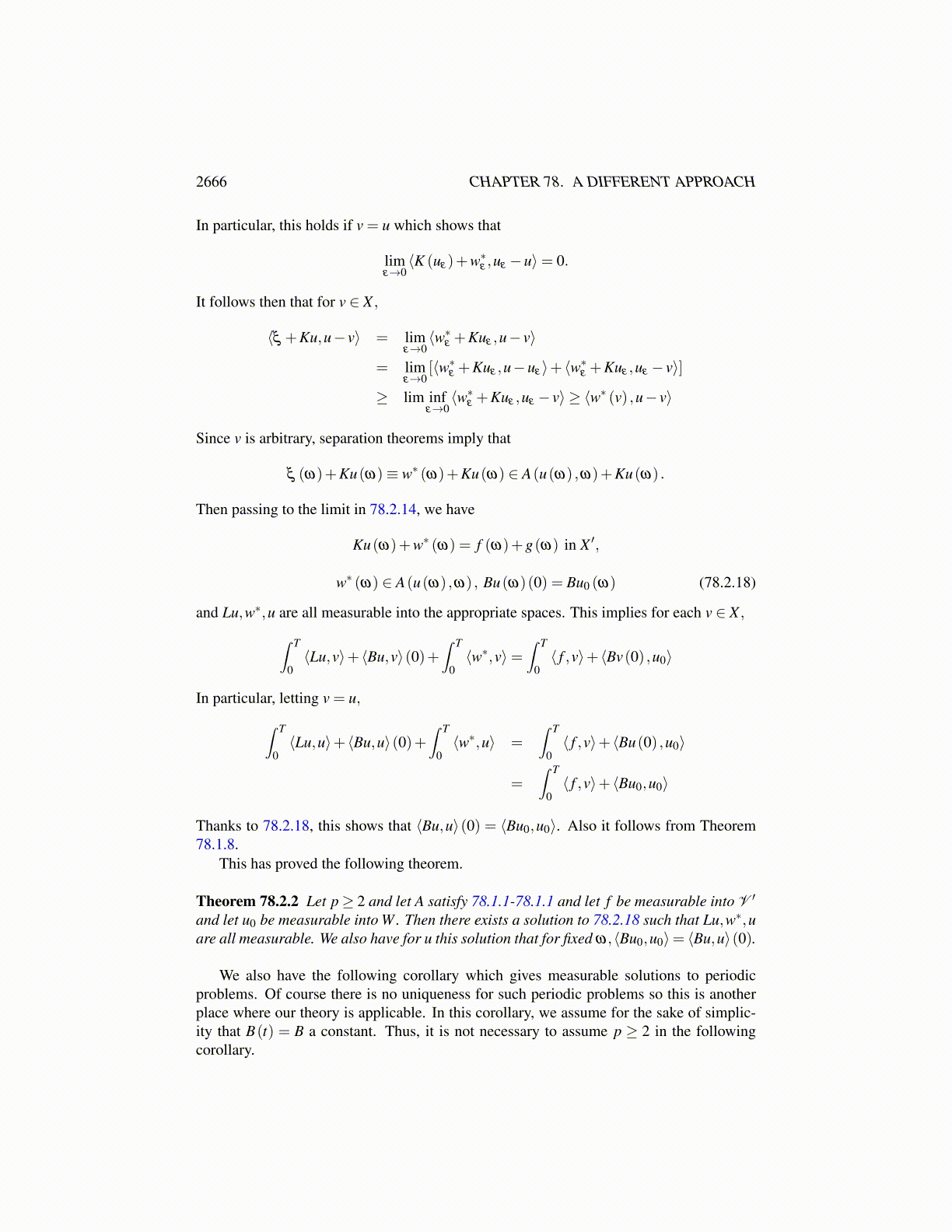
2666 CHAPTER 78. A DIFFERENT APPROACH
Lemma 78.2.1 Let f be measurable into V ′ and let A satisfy the conditions 78.1.1 - 78.1.1.Then for K and M defined as above, it follows there exist measurable uε and w∗ε satisfying78.2.14.
Note this implies that, suppressing dependence on ω,
⟨Buε ,v⟩(0) = ⟨Bv(0) ,u0⟩
for all v ∈ X . Thus, letting v be a smooth function with values in V
⟨Buε (0) ,v(0)⟩= ⟨Bu0,v(0)⟩
Since V is dense in W, this requires Buε (0) = Bu0.Now define Λ to be the restriction of L to those u ∈ X which have Bu(0) = 0. Thus by
Corollary 78.1.9,
D(Λ) = {u ∈ X : Bu(0) = 0}= {u ∈ X : ⟨Bu,u⟩(0) = 0}
and if v ∈ D(Λ) ,u ∈ X , then as noted earlier,
⟨Ku,v⟩=∫ T
0⟨Lu,v⟩ds
Also, one can show an estimate for Λ∗.You can define D(T )≡ {u ∈ V : u′ ∈ V , u(T ) = 0} and let Tu =−Bu′. Then
⟨Tu,u⟩ = −∫ T
0
⟨Bu′,u
⟩=−⟨Bu,u⟩ |T0 +
∫ T
0
⟨(Bu)′ ,u
⟩= ⟨Bu,u⟩(0)+
∫ T
0
⟨B′u,u
⟩+∫ T
0
⟨Bu′,u
⟩and so we obtain
2⟨Tu,u⟩ ≥∫ T
0
⟨B′u,u
⟩(78.2.15)
Then one shows that T ∗ = Λ and that the graph of Λ∗ is the closure of the graph of T thusshowing that Λ∗ also satisfies an inequality like 78.2.15 for u ∈ D(Λ∗).
From 78.2.14,
ε⟨Lv,J−1Luε
⟩V ′,V + ⟨Kuε (ω) ,v⟩X ′,X + ⟨w∗ε (ω) ,v⟩V ′,V
= ⟨ f (ω) ,v⟩V ′,V + ⟨g(ω) ,v⟩V ′,V
If we restrict to v ∈ D(Λ) so Bv(0) = 0, then it reduces to
ε⟨Λv,J−1Luε
⟩V ′,V + ⟨Luε (ω) ,v⟩V ′,V + ⟨w∗ε (ω) ,v⟩V ′,V = ⟨ f (ω) ,v⟩V ′,V
and so J−1Luε ∈ D(Λ∗) . Thus, since D(Λ) is dense in V , it follows that
εΛ∗J−1Luε +Luε +w∗ε = f in V ′